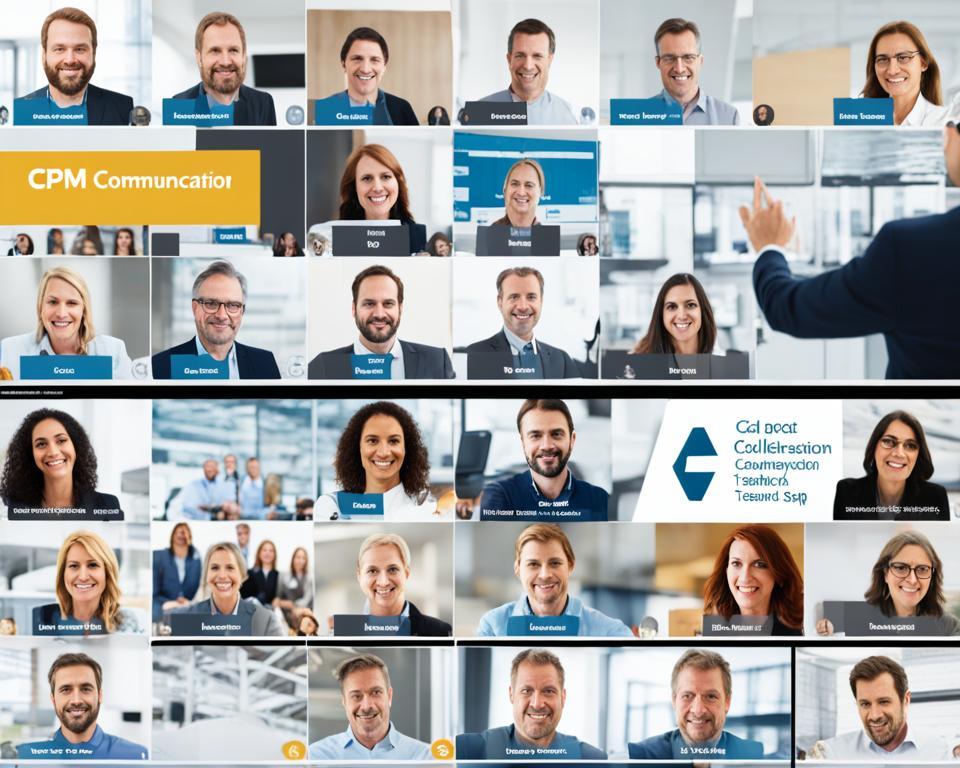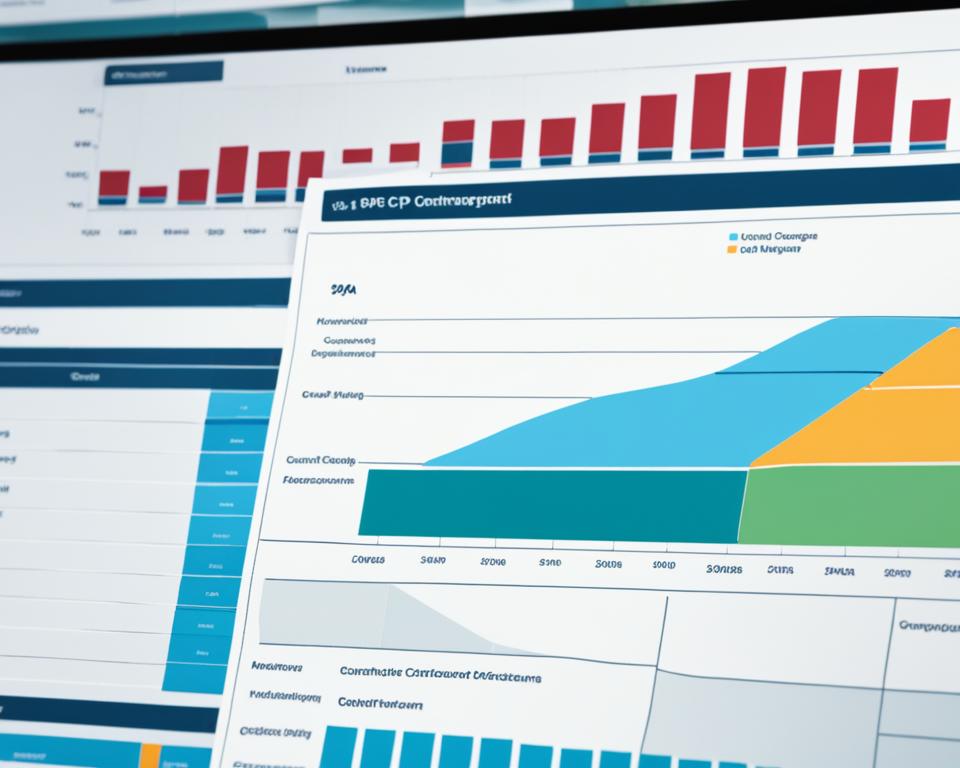Ever thought about how some companies make their customer relations amazing? In today’s market, learning SAP Customer Portfolio Management (CPM) can change the game. It helps businesses manage their customer talks better and makes decisions smarter with advanced analytics.
Using SAP CPM, companies can make their customer management more personal. They can understand their clients better. In this article, we’ll see how SAP’s advanced analytics and smart insights help make better choices. This can lead to more growth and profits.
To learn more about how SAP improves customer relations, check out SAP’s solutions. They offer advanced business application programming. This can make your company better at managing customer portfolios. For more info, visit this link.
Key Takeaways
- SAP CPM is key for better customer relations through advanced analytics.
- Data insights help companies make their customer management strategies better.
- Good customer relations can lead to more growth and profits.
- Using SAP solutions can make business processes smoother for customer interaction.
- Knowing what customers need is crucial for successful portfolio management.
Understanding the Basics of Customer Portfolio Management
Customer portfolio management is key to building strong customer relationships. It helps companies know which customers to focus on. This approach boosts customer loyalty and satisfaction.
Definition and Importance
This practice means managing how a company talks to its customers. It’s vital because it helps businesses focus on the most valuable customers. By picking the right customers, companies can use their resources better. This leads to happier customers and more of them staying with the company.
Key Components of Customer Portfolio Management
Several important parts make customer portfolio management work well. These include:
- Customer Segmentation: Grouping customers by their traits or actions helps tailor marketing.
- Relationship Management: Keeping and growing customer relationships builds loyalty and satisfaction.
- Data Analytics: Using data helps make smart choices that improve how customers are treated.
Using these parts leads to deeper customer insights. This can help a business succeed.
| Component | Description | Impact |
|---|---|---|
| Customer Segmentation | Grouping customers based on demographics or purchasing behaviors. | Improved targeting in marketing campaigns. |
| Relationship Management | Building long-term relationships with customers. | Increased customer loyalty and retention. |
| Data Analytics | Analyzing customer data to gain actionable insights. | Enhanced decision-making and personalized services. |
The Role of SAP in Enhancing Customer Relations
SAP is key in making customer relations better with its strong SAP solutions. These solutions help businesses manage their customer interactions well. They offer CRM, data analytics, and business intelligence to improve the customer experience.
Overview of SAP Solutions
Using SAP solutions helps organizations handle and understand customer data well. Key parts include:
- Customer Relationship Management (CRM) modules
- Data analytics tools that give insights into customer behavior
- Business intelligence apps that help make strategic decisions
These tools are big for better customer relations. They make sure businesses have the right info and can act on it. Working with these tools helps businesses stay ahead.
Integration with Business Processes
It’s important to link SAP CPM with business processes to use customer insights well. This means data moves smoothly between departments. This leads to:
- Better customer service
- Marketing strategies that match customer needs
- Operations that are faster and cheaper
This approach helps with better customer relations by giving a full view of the customer’s journey. For more on this, check out this resource.

| Feature | Description |
|---|---|
| CRM Modules | Tools designed for managing interactions with customers and prospects. |
| Data Analytics | Capabilities for analyzing customer data to identify trends and insights. |
| Business Intelligence | Tools that help in making informed decisions based on comprehensive data analysis. |
Benefits of SAP CPM
Using SAP Customer Portfolio Management (CPM) brings big benefits for companies wanting to improve their customer relationships. It uses modern tech to give deeper insights into what customers like and do. This helps make smarter choices about what products to focus on.
Improved Customer Analytics
With better customer analytics, companies can look at lots of data on how customers act and what they like. This helps us understand what our customers really need. We can then make our products and services fit their needs better.
This isn’t just about looking at data. It helps us spot trends and make smart choices to grow and keep customers. By using data from different places, we get a full picture of how we’re doing. This is key for planning ahead.
Optimized Portfolio Strategies
One big plus of SAP CPM is better portfolio optimization. By focusing on the most valuable customers, we use our resources wisely. We can change our strategies quickly based on what customers tell us and changes in the market.
This flexibility helps us make more money and keep customers happy. By focusing on the right customers, we stay ahead of the competition and meet market needs well.
For more on improving supplier relationships and optimizing partnerships, check out the Ariba Supplier Collaboration platform. It has great tools to make procurement smoother.
SAP CPM and Customer Analytics
In today’s fast-changing business world, using data is key to success. SAP CPM gives companies strong customer analytics. It helps pull out data-driven insights for better decisions. This helps understand what customers like, how they act, and what trends are out there.
Data-Driven Insights for Better Decision Making
Data-driven insights are vital for making smart business moves. With SAP CPM, I can look at lots of customer data, like what they buy and how they interact. This deep dive helps businesses make marketing that really speaks to their audience. It leads to stronger customer ties and better results.
Real-Time Reporting Capabilities
Real-time reporting is a big part of SAP CPM. It keeps me up to speed on important performance signs right away. This lets me quickly change strategies based on new data. With real-time reporting, companies can quickly adapt to market shifts and customer thoughts, making the customer experience better at every step.
Platforms like SAP Ariba add to this, linking smoothly to buying processes and boosting analytics. For more on this, check out my full look at the platform here.
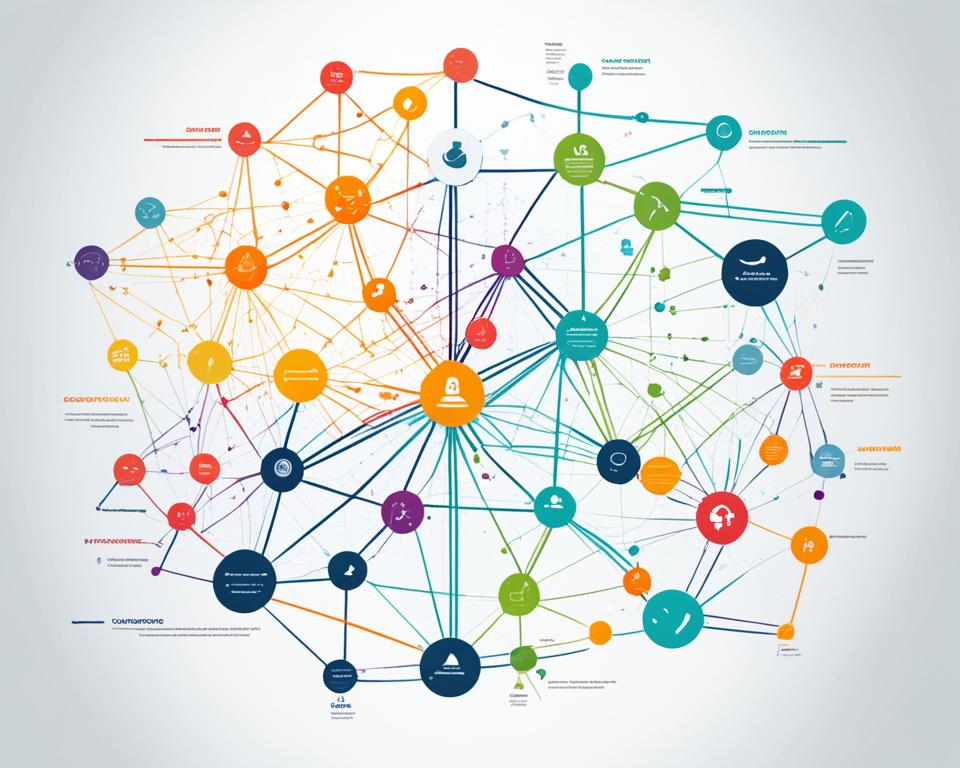
Portfolio Optimization in SAP CPM
Portfolio optimization is key to making a business successful in customer portfolio management. It means finding customers who can help the business grow and make more money. By using customer data, I can make strategies that improve how customers feel and fit with the company’s goals. Also, having a diverse portfolio is crucial because it reduces risks and keeps the business stable in changing markets.
Identifying High-Value Customers
Finding customers with the most value is a big part of optimizing a portfolio. This helps businesses make products that meet their customers’ needs. I look at things like how often they buy, how much they spend, and how loyal they are to find these valuable customers. Then, I can make plans to keep these customers happy and profitable for a long time.
Strategies for Portfolio Diversification
Having a diverse portfolio is important to reduce risks. By knowing about different customers, I can use resources better. Here are some ways to make a portfolio more diverse:
- Target Different Market Segments: Getting customers from various groups spreads out the risk.
- Vary Product Offerings: Adding new products for different groups can draw in more customers.
- Utilize Data Analytics: Looking at customer behavior helps make smart choices about where to put resources.
Effective Risk Management with SAP CPM
Today, managing risks well is key for businesses. I know that knowing what risks a customer might bring helps me plan better. With SAP CPM, I can spot, watch, and lessen risks for each customer group.
Understanding Customer Risk Profiles
Customer risk profiles are key for seeing what might affect my business. They help spot customers who might pay late, not pay at all, or spend less. By looking at past data and how customers act, I can group them by risk level. This lets me make risk management plans that really work.
Mitigating Financial and Operational Risks
To lessen risks, I take steps ahead of time. With SAP tools, I keep an eye on what customers do and update risk profiles as needed. I use different ways to manage risks, including:
- Regular checks on important performance signs
- Setting tougher credit rules for high-risk customers
- Creating backup plans for unexpected problems
This detailed plan keeps me ready for surprises and helps keep my business running smoothly and financially strong.
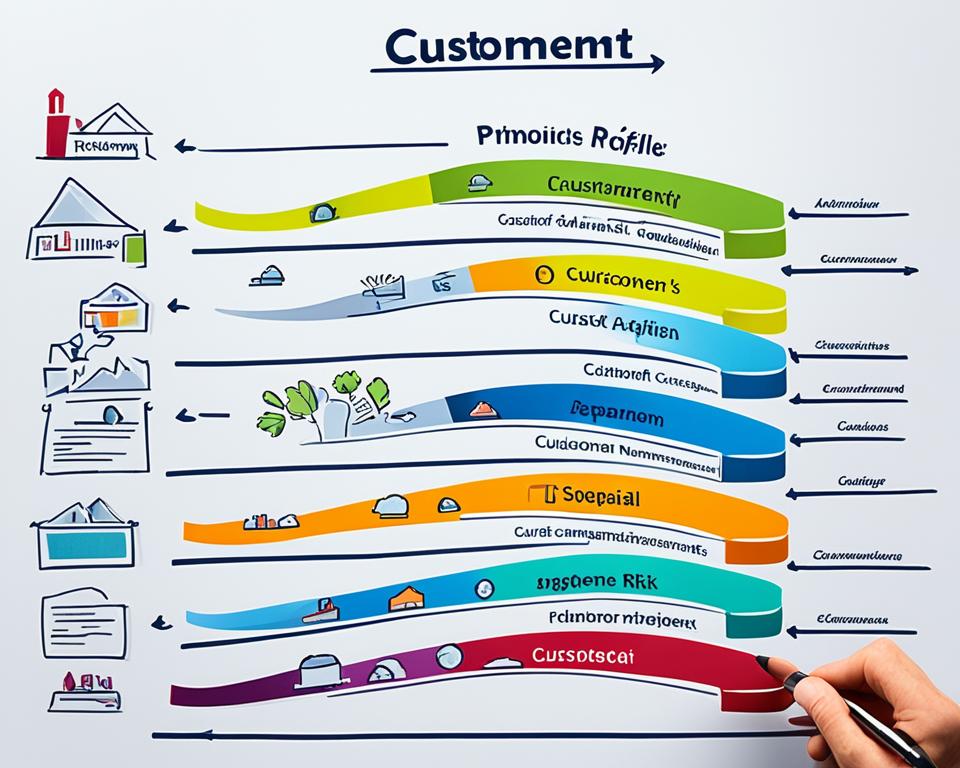
Customer Segmentation Approaches
Understanding customer segmentation is key for effective targeted marketing in SAP CPM. It helps businesses group their customers into specific groups. This makes marketing efforts better and improves product development strategies. Using different segmentation methods makes the customer experience more personal.
Techniques for Targeted Marketing
Using demographic, psychographic, and behavioral segmentation boosts targeted marketing. Each method gives a fresh view:
- Demographic Segmentation: This method sorts customers by age, gender, income, and education. It helps send out messages that hit the mark.
- Psychographic Segmentation: By looking at values, lifestyles, and personality traits, I can make marketing that feels closer to home.
- Behavioral Segmentation: Knowing how customers act and what they buy lets me send out promotions at the right time.
Leveraging Segmentation for Product Development
Customer segmentation insights help guide product development. By spotting the special needs of different groups, businesses can make products that speak to their audience. This approach boosts sales and builds brand loyalty. The table below shows how segmentation shapes product development:
| Segmentation Type | Product Focus | Marketing Strategy |
|---|---|---|
| Demographic | Luxury Products for High-Income Earners | Exclusive Promotions |
| Psychographic | Eco-Friendly Products | Value-Based Messaging |
| Behavioral | Subscription Services | Loyalty Rewards |
Profitability Analysis through SAP CPM
Profitability analysis is key in SAP Customer Portfolio Management (CPM). It helps me see which customers are most profitable. This info is crucial for setting the right prices, which boosts revenue.
Assessing Customer Profitability
To do a good profitability analysis, I look at customer profits through different metrics. I focus on the margins each customer brings in. This helps me know where to put my efforts. Important metrics include:
- Contribution Margin: The revenue minus variable costs for each customer.
- Customer Acquisition Costs (CAC): The amount spent to acquire a new customer.
- Lifetime Value (LTV): The total revenue expected from a customer over the entire relationship.
Evaluating Pricing Strategies
With the insights from profitability analysis, I can improve my pricing. This means:
- Dynamic Pricing: Changing prices based on demand and customer value.
- Segmented Pricing: Setting different prices for various customer groups to make more profit.
- Discount Strategies: Offering discounts to keep high-value customers happy.
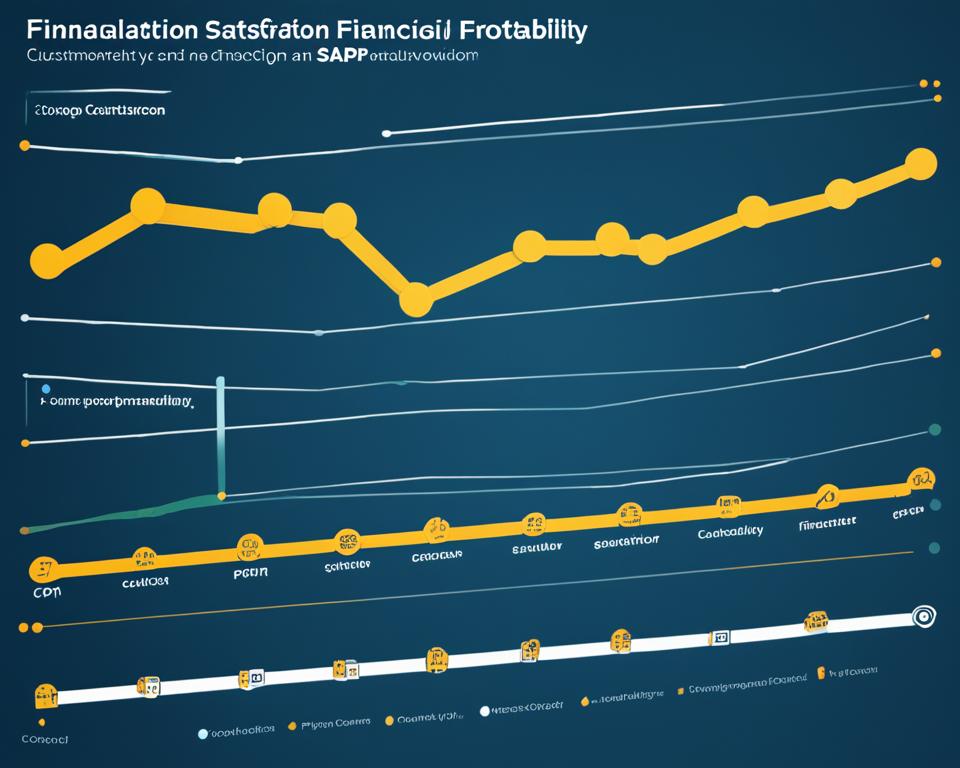
| Customer | Contribution Margin | Customer Acquisition Costs | Lifetime Value |
|---|---|---|---|
| Customer A | $5,000 | $1,000 | $10,000 |
| Customer B | $3,000 | $1,500 | $7,000 |
| Customer C | $7,500 | $2,000 | $15,000 |
This structured way of analyzing profitability gives me clear insights. These insights help me make smart business choices. They also guide me in setting the right prices in SAP CPM.
Enhancing Customer Lifetime Value
Boosting customer lifetime value (CLV) is key to lasting growth. I use strategies that focus on making each customer feel special and building loyalty. These efforts meet their unique needs and build a strong bond with the brand.
Strategies for Increasing Customer Loyalty
Here are some ways to make customers stick around:
- Personalization: Making offers and experiences fit each customer’s needs makes them feel at home.
- Loyalty Programs: Rewards can encourage customers to buy more and stay with us longer.
- Exceptional Customer Service: Going above and beyond in support leads to happy reviews and word-of-mouth.
Measuring and Analyzing Lifetime Value
There are several ways to measure the value of customers:
- Data Analytics: Looking at what customers buy helps spot the most valuable ones.
- Segmentation: Grouping customers lets us tailor marketing to their needs.
- Feedback Mechanisms: Hearing from customers helps us know what they like and what we can do better.
By using these strategies and keeping an eye on customer lifetime value, we can keep our customers coming back. I always look for new ways to make loyalty grow, using data to guide me. This keeps my efforts fresh and effective.
| Strategy | Description | Impact on CLV |
|---|---|---|
| Personalization | Customizing offers based on customer preferences | Higher engagement and satisfaction |
| Rewards Programs | Loyalty incentives for repeat purchases | Increased repeat purchases |
| Customer Service | Providing exceptional support and guidance | Positive brand perception and referrals |
Retention Strategies for Long-Term Success
Building strong customer relationships is key to success. Trust grows when we interact clearly and honestly. By focusing on the customer, we make them loyal and happy, keeping them with us longer.
Building Strong Customer Relationships
To build strong bonds, I learn what each customer likes and needs. Making things personal helps create a stronger connection. Asking for feedback helps me improve and meet their expectations. This is a big part of keeping customers around.
Implementing Effective Communication Plans
Good communication makes customers feel important and in the loop. I use regular updates and special offers to keep them interested. This keeps trust high and customers close to our brand. Using automated systems helps keep things personal and on time.

Looking into things like effective integrations can also help. They make things easier and give us insights into what customers want. Focusing on these strategies helps keep customers coming back and our business growing.
Exploiting Cross-Selling Opportunities
In today’s market, using cross-selling can really boost your sales. By looking at what customers like and buy, you can find new areas to sell more. It’s key to have a good plan to make the most of these chances.
Identifying Potential Cross-Sell Markets
Knowing what customers buy helps spot where to cross-sell. SAP CPM has strong analytics to dig into your data. Important things to look at include:
- Customer demographics and purchase history
- Complementary product associations
- Market trends and customer feedback
These points help you see where cross-selling will work best.
Techniques for Successful Cross-Selling
Good cross-selling methods can really boost sales. Here are some top tips:
- Recommending complementary products: This makes shopping better by suggesting items that go well together.
- Personalizing offers: Making deals based on what customers have bought before makes them more appealing.
- Utilizing remarketing campaigns: Ads that target customers who looked at items before can bring them back to buy.
With these methods, you can make the most of cross-selling. This leads to bigger orders and more engaged customers.
Real-World Success Stories with SAP CPM
Looking at real success stories shows how SAP Customer Portfolio Management (CPM) helps organizations. It gives us insights into how to build better customer relationships. Leaders in the industry share their experiences, giving us case studies that show the big impact of SAP CPM.
Case Studies of Successful Implementations
Many case studies show how SAP CPM has helped different companies improve their customer relationships. For example, a big retailer used SAP CPM to get better at customer analytics. This helped them spot trends and create marketing plans just for those customers. They saw a big increase in customer loyalty and engagement.
- Financial services company: Improved risk assessment and customer satisfaction through targeted interventions.
- Telecommunications provider: Enhanced customer segmentation which led to better service delivery and increased revenue.
Lessons Learned from Industry Leaders
Learning from industry leaders gives us key lessons for using SAP CPM. They tell us how important clear reports and good documentation are during development. Also, getting the most out of data is key for making good decisions. Companies that do well say it’s important to train staff well, especially in ABAP programming skills. This affects how good their reports are.
For more tips on improving reporting, check out this resource: mastering ABAP reports. This info is great for making SAP CPM work better.
Future Trends in Customer Portfolio Management
The way we manage customer portfolios is changing fast, thanks to new technologies. These changes will affect how companies talk to their customers. They will change how businesses work and how they connect with customers.
Emerging Technologies and Their Impact
Technologies like artificial intelligence, machine learning, and data analytics are leading this change. They help businesses understand customers better, making experiences more personal and improving decisions. For example, AI-driven algorithms can look at lots of customer data to predict what customers might want.
As these technologies get better, we’ll see more focus on using data to make customer interactions better. This will lead to stronger connections and happier customers.
Predictions for the Evolution of Customer Relationships
With these technologies, customer relationships with brands will change a lot. Customers will want more personalized experiences, changing what they expect from companies. Companies will need to understand what each customer needs.
The way customer relationships evolve will depend on how well brands meet these needs. They’ll need to use customer feedback to keep improving their services.
Conclusion
Using SAP CPM gives me a strong way to improve my customer relationships. It helps me understand what my customers want and need. This leads to better ways to connect with them.
The analytics in SAP CPM help me focus my marketing. I can make sure my efforts hit the right people. This makes my marketing more effective.
Managing risks is key with SAP CPM. It lets me look after my customer base carefully. By spotting and fixing problems early, I protect my income and keep my customers happy.
Businesses need to keep up with changing customer needs by using tools like SAP CPM. To do better and keep customers coming back, I must use these insights every day. For more tips on making SAP programs work better, check out mastering ABAP debugging and performance tuning. It has more ways to make my system run smoothly.
FAQ
What is SAP Customer Portfolio Management?
SAP Customer Portfolio Management (CPM) is a way to make the most of customer relationships. It uses advanced analytics and customer grouping to boost growth.
How does SAP CPM enhance customer analytics?
SAP CPM improves customer analytics by giving deep insights. These insights help businesses understand customer behavior and trends. This leads to smarter decisions and keeping customers happy.
Why is customer segmentation important in SAP CPM?
Customer segmentation is key in SAP CPM. It helps businesses spot different customer groups. By focusing on high-value customers, they can make marketing more effective. This increases profits and loyalty.
What benefits can I expect from implementing SAP CPM?
Using SAP CPM leads to better customer insights and smarter portfolio strategies. It also helps manage risks better. All these lead to stronger customer relationships and more profits.
How can SAP CPM assist in portfolio optimization?
SAP CPM helps by finding customers who spend a lot and grouping them. This lets businesses spread out their offerings and reduce risks.
What role does risk management play in SAP CPM?
Risk management is vital in SAP CPM. It helps understand what risks customers might pose. This knowledge is key to keeping customers and succeeding in business.
How can I measure customer lifetime value using SAP CPM?
To measure customer lifetime value, use SAP CPM to look at past purchases and behavior. This helps in making personalized efforts to keep customers.
What strategies can I implement for effective customer retention with SAP CPM?
For keeping customers, build strong bonds with them through regular updates. Use loyalty programs that show they’re important to you.
How can SAP CPM help identify cross-selling opportunities?
SAP CPM spots cross-selling chances by looking at what customers buy. It suggests related products, boosting sales and making customers happier with special offers.
What emerging technologies impact the future of customer portfolio management?
New tech like artificial intelligence and machine learning will change customer portfolio management. They’ll make customer analysis more precise, automate tasks, and tailor marketing, changing how we connect with customers.





